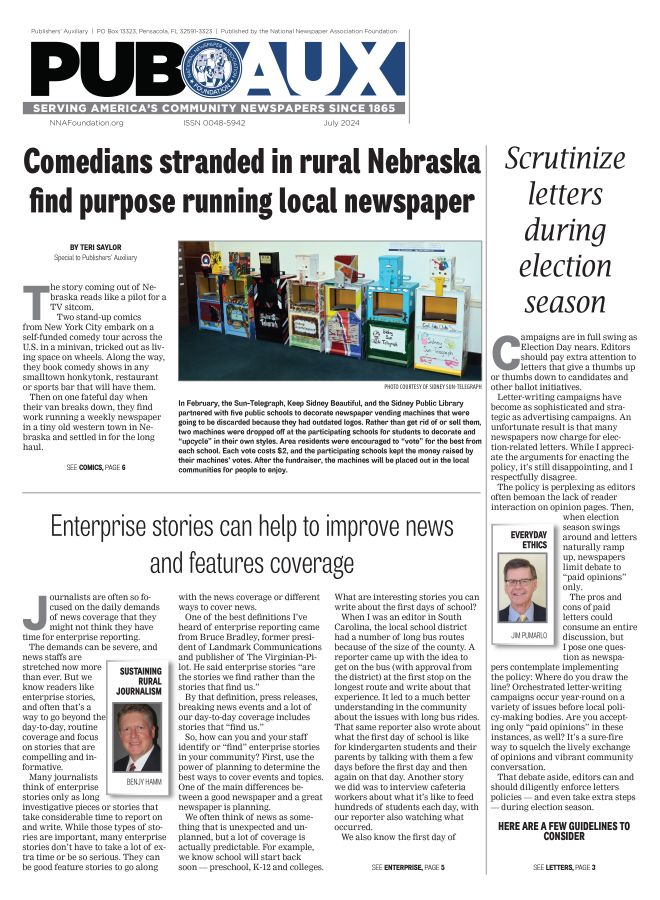100 Days: Have politicians kept their promises?
By Jim Pumarlo
The 2010 elections are in the rearview mirror. The newly elected lawmakers have settled into their routines, and newsrooms are focusing on the news of the day. For most editors and reporters, the next cycle of elections is likely not within sight and therefore out of mind.
The question for newsrooms: Should elections take a permanent back seat until the next filing period opens?
Presidential politics underscore that the process of electing individuals—especially the high-profile and high-ranking offices—is a never-ending cycle. From my vantage point in Minnesota, that’s eminently clear with the recent announcement that former Gov. Tim Pawlenty has formed an exploratory committee for the U.S. presidency. Another Minnesota politician, U.S. Rep. Michelle Bachmann, R-MN, is making national headlines with her leadership in the tea party and talk of a presidential bid in 2012.
The national headlines, though causing many to bemoan the 24/7/365 election cycle, is an excellent reminder that election coverage cannot simply be turned on and turned off. Continuing coverage, if thoughtfully planned and carried out, goes a long way toward holding elected officials accountable. It also can enrich your coverage of local public affairs.
It’s routine for political commentators to rate the president after the first 100 days in office. Why not use the benchmark to check in with local elected officials and, in concert, with the respective governing bodies?
A variety of angles can be pursued. For example:
l Candidates emerge victorious on a platform of what they represent and what they promise to accomplish. That often provides the basis for why they are challenged in the next election—whether it’s two, four or six years later. Prepare periodic scorecards of how the lawmakers are performing, especially holding them accountable for their campaign pledges.
l A new year often is accompanied by a new agenda—“state of the state” speeches by the mayor, or county board chair, or school board president, whether they are new or continuing in their leadership positions. Detail their objectives and track their progress, periodically generating stories and, where appropriate, editorial commentary.
l Elections can produce new voting blocs and, as a result, a change in the dynamics of governmental bodies. That may be easily noticeable when individuals run on a party label. It’s less evident where office holders are not elected on a partisan basis. Reporters who regularly cover these bodies are in excellent position to analyze the changes and preview what might be in store for citizens during the short term and long term.
Elections are challenging as well as chaotic for newsrooms, and understandably so. Substantive coverage is exhausting as reporters also strive to keep abreast of the everyday news that crosses their desks. As a result, many election stories may focus on an individual’s ability to campaign rather than an ability to govern.
That’s why election coverage should not shut down when the polls close. Election editions should close the books on one election cycle and provide the springboard for the next cycle. It’s a worthwhile exercise for staffs to review the election edition periodically and refresh themselves about what the voters said and what the victors promised.
Many candidates receive a free pass on answering the tough policy questions as press releases are exchanged during the churn of election campaigns. Reporters have a better opportunity to follow and analyze actions once the winners have been seated and the dynamics of the governing bodies take shape. These stories will hold lawmakers and governing bodies accountable and will provide meaningful coverage for your readers. © Jim Pumarlo 2011
Jim Pumarlo regularly writes, speaks and provides training on Community Newsroom Success Strategies. He is author of “Votes and Quotes: A Guide to Outstanding Election Coverage” and “Bad News and Good Judgment: A Guide to Reporting on Sensitive Issues in a Small-Town Newspaper.” He can be contacted at www.pumarlo.com.







